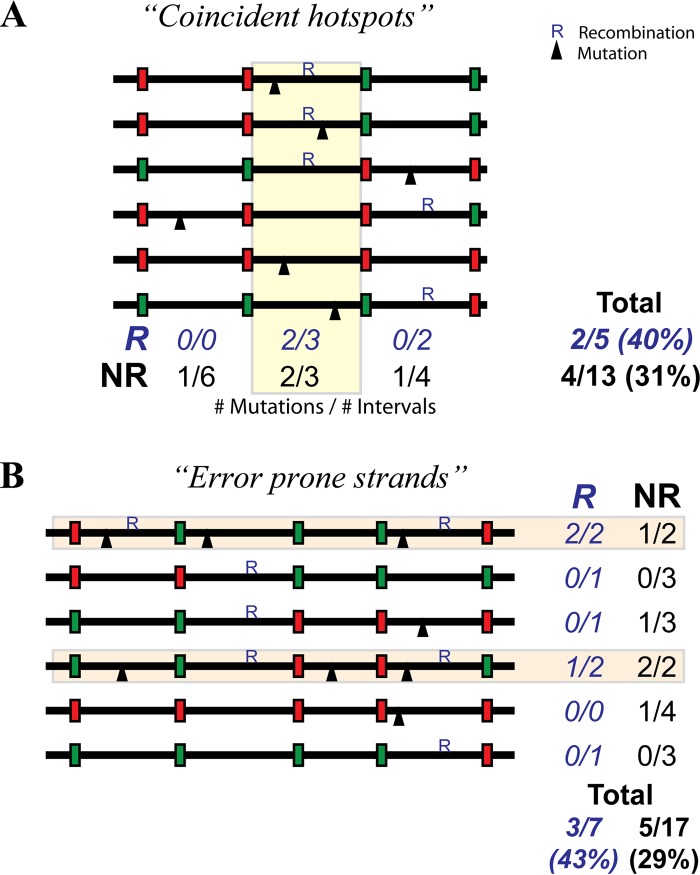FIG 2.
Association between recombination and mutation. An experimental association between mutation and recombination may be observed due to either coincident hot spots (A) or error-prone strands (B), even though there is no real mechanistic association. (A) A coincident hot spot scenario can occur if there is a region of the genome with both high mutation and high recombination rates (yellow box). In this scenario, overall, we see that 2 of the 5 recombined segments (R) (40%) have mutations, and only 4 of the 13 (31%) nonrecombined segments (NR) have a mutation. However, this apparent association is due simply to the high mutation and recombination rates in the yellow region. There is no higher mutation rate in R segments when individual regions are analyzed separately; that is, there are no mutations in the recombined regions outside the hot spot and an equal rate of recombination in R and NR within the hot spot (i.e., 2/3 segments have mutations for both R and NR). (B) The presence of error-prone strands (light orange) with high mutation and recombination rates can also lead to an erroneous association. Here we observed that 3/7 (43%) recombined regions contain a mutation and that 5/17 (29%) nonrecombined regions contain a mutation. However, there are no mutations in recombined regions outside the error-prone strands, and in the error-prone strands, there are a total of 3/4 regions mutated in both the recombined and nonrecombined regions.

